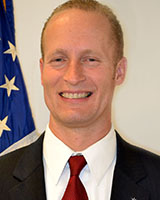
White House seeks to answer one of the biggest mysteries of federal IT
The White House hosted a summit to educate agencies on how to implement Technology Business Management standards to improve the line of sight from dollars spent...
Like the famous 1970s commercial where the owl asks how many licks does it take to get to the center of a Tootsie Roll lollipop, we may never know how much the government spends on technology.
The fiscal 2018 estimate is $90 billion. But the Office of American Innovation lead and assistant to the president for strategic initiatives Chris Liddell said on July 20 that number could be more like $200 billion.
This unknown, as well as many other mysteries of federal IT, such as the longstanding question about what outcomes are agencies getting for this rate of spending and how to move to a consumption model for cloud computing when no one is quite sure of who is using what, are driving the government’s move to technology business management (TBM) standards.
Liddell, who kicked off a TBM summit at the White House, said the Trump administration’s goal to modernize, better secure and reduce spending on technology will be anchored by these standards.
“TBM sits right in that framework,” he said. “We do not have high-quality information and that’s one of the biggest issues we face. When I came here and was looking for information that I would’ve had in previous jobs, it just isn’t here. It’s important today to focus effort on what I think is important and necessary information … to help us get the rate of change in government up a lot higher.”
TBM standards let agencies model and manage IT costs and services in order to better direct spending. The TBM framework includes a taxonomy to identify and discuss IT efforts and spending in order for the entire organization to understand.
Several agencies already are implementing them, including the Department of Justice, the General Services Administration and the Food and Drug Administration.
Margie Graves, the acting federal chief information officer, said the Office of Management and Budget recognizes that moving to TBM across the government will be a major undertaking.
OMB kicked off the effort with the 2019 capital planning and investment control (CPIC) guidance.
But Graves said agency CIOs, CFOs and other CXOs should embrace TBM as a way to drive the discussion about spending on business and technology, especially as budgets continue to tighten.
“We centered on why this is a valuable proposition, and the value proposition is where we start. We want to answer the questions for our mission, business leaders for where they should most effectively spend their dollars. If we do that, then we are having the business conversation, and not having the IT conversation,” Graves said in an interview with reporters after the summit. “It’s what am I doing to buy down cyber risk, and how am I spending my money in IT to make sure I do that, and how do I make sure my next dollar goes to the next important thing? That’s what the CFOs want to know. That’s what the business leads want to know. The CFO needs to be able to trade-off between multiple competing requirements and limited amounts of resourcing, so why wouldn’t the CFO want more transparency into what’s being spent?”
Throughout the half-day event, federal executives heard from private sector experts, including ExxonMobil CIO Mike Brown, who described his organization’s challenges and successes in moving to TBM.
“Six years ago, when I took this job, the chairman thought we were doing a pretty good job in delivering a secure and reliable IT offering, but we were missing on the value side,” Brown said at the summit. “We have made investments in TBM, particularly in our back-office automation efforts. Now we have 25 percent fewer people doing day-to-day IT support and our reliability is up significantly. We were getting 2.3 million-to-2.4 million help desk calls a year and now we are getting to 300,000 a year. Of the portfolio that I and my people manage, 40 percent of the projects didn’t exist six years ago, and at the same time, of the projects we are doing for the business side six years ago, 11 percent generated return to shareholders. Last year, 70 percent of those projects generated return to our shareholders. We spent about $900 million in projects last year and were done 25 percent faster than six years ago.”
Brown said he can’t credit all of these improvements and changes to TBM, but acknowledged the role the standards play in improving ExxonMobil’s IT oversight and management.
“TBM is foundational for what we did,” he said. “It is absolutely a key part of why we have applications in the center and stuff that supports the business lines like financial management, supply chain and acquisition. Those have gone from 4,200 to 1,800 apps, and our business related apps decreased to 600 from 900.”
Brown added TBM is freeing his IT staff from “doing a bunch of junk work” and now they can apply IT to do IT, while his staff can focus on the IT for the business.
Tony Scott, the former federal CIO who helped initiate the move to TBM through the CIO Council in 2016 through the IT Cost Commission effort with the TBM Council, said the need for better and more complete metrics has been a longstanding challenge across government.
“The consistent message at the event was don’t swallow everything whole, get your feet wet with a smaller effort and expand it from there,” Scott said in an interview with Federal News Radio. “There was a robust discussion about data and starting with the data you have. It may not be at the granular level you ultimately want or everything you want, but getting started with what you have and building the muscle to learn to move data into different taxonomies and reporting capabilities that the cost commission suggested and then improve from there.”
Scott said he encourages CIOs, CFOs and others not to push back against what the data is saying, but learn from it and improve it over time.
“It takes two-to-three turns of the crank until you get stuff that is highly valuable,” he said. “So you have to go through this journey to get to the valuable information.”
Dan Chenok, a former OMB official and now executive director of the IBM Center for the Business of Government, who attended the summit, said he took from the event the concept of starting with a goal in mind and then using the data to prove or disprove it.
Chenok said it’s important for OMB and the CIO Council to play an active role in supporting the implementation of TBM. He said bringing in public or private sector experts or bringing together a working group to help answer questions would help alleviate any concerns or challenges.
The biggest concern among agencies is the cost to implement TBM. Scott said he’s heard from other CIOs that this is another “unfunded” mandate. But the value of moving to TBM, and the advice from many experts to start small with the data you have, and then improve, outweighs any initial expenses.
Return to the Reporter’s Notebook
Copyright © 2024 Federal News Network. All rights reserved. This website is not intended for users located within the European Economic Area.
Jason Miller is executive editor of Federal News Network and directs news coverage on the people, policy and programs of the federal government.
Follow @jmillerWFED





